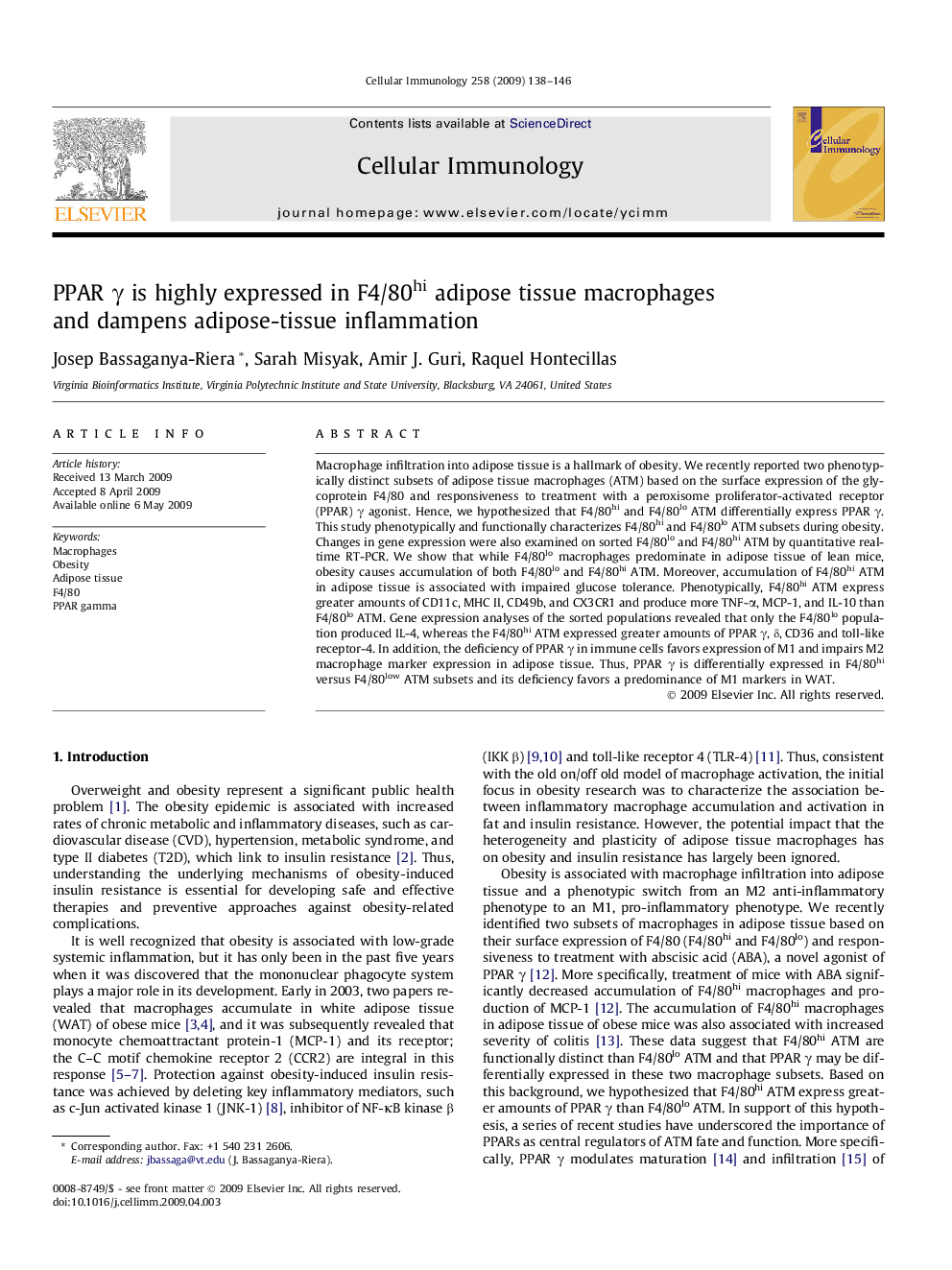| Article ID | Journal | Published Year | Pages | File Type |
|---|---|---|---|---|
| 2167802 | Cellular Immunology | 2009 | 9 Pages |
Macrophage infiltration into adipose tissue is a hallmark of obesity. We recently reported two phenotypically distinct subsets of adipose tissue macrophages (ATM) based on the surface expression of the glycoprotein F4/80 and responsiveness to treatment with a peroxisome proliferator-activated receptor (PPAR) γ agonist. Hence, we hypothesized that F4/80hi and F4/80lo ATM differentially express PPAR γ. This study phenotypically and functionally characterizes F4/80hi and F4/80lo ATM subsets during obesity. Changes in gene expression were also examined on sorted F4/80lo and F4/80hi ATM by quantitative real-time RT-PCR. We show that while F4/80lo macrophages predominate in adipose tissue of lean mice, obesity causes accumulation of both F4/80lo and F4/80hi ATM. Moreover, accumulation of F4/80hi ATM in adipose tissue is associated with impaired glucose tolerance. Phenotypically, F4/80hi ATM express greater amounts of CD11c, MHC II, CD49b, and CX3CR1 and produce more TNF-α, MCP-1, and IL-10 than F4/80lo ATM. Gene expression analyses of the sorted populations revealed that only the F4/80lo population produced IL-4, whereas the F4/80hi ATM expressed greater amounts of PPAR γ, δ, CD36 and toll-like receptor-4. In addition, the deficiency of PPAR γ in immune cells favors expression of M1 and impairs M2 macrophage marker expression in adipose tissue. Thus, PPAR γ is differentially expressed in F4/80hi versus F4/80low ATM subsets and its deficiency favors a predominance of M1 markers in WAT.
